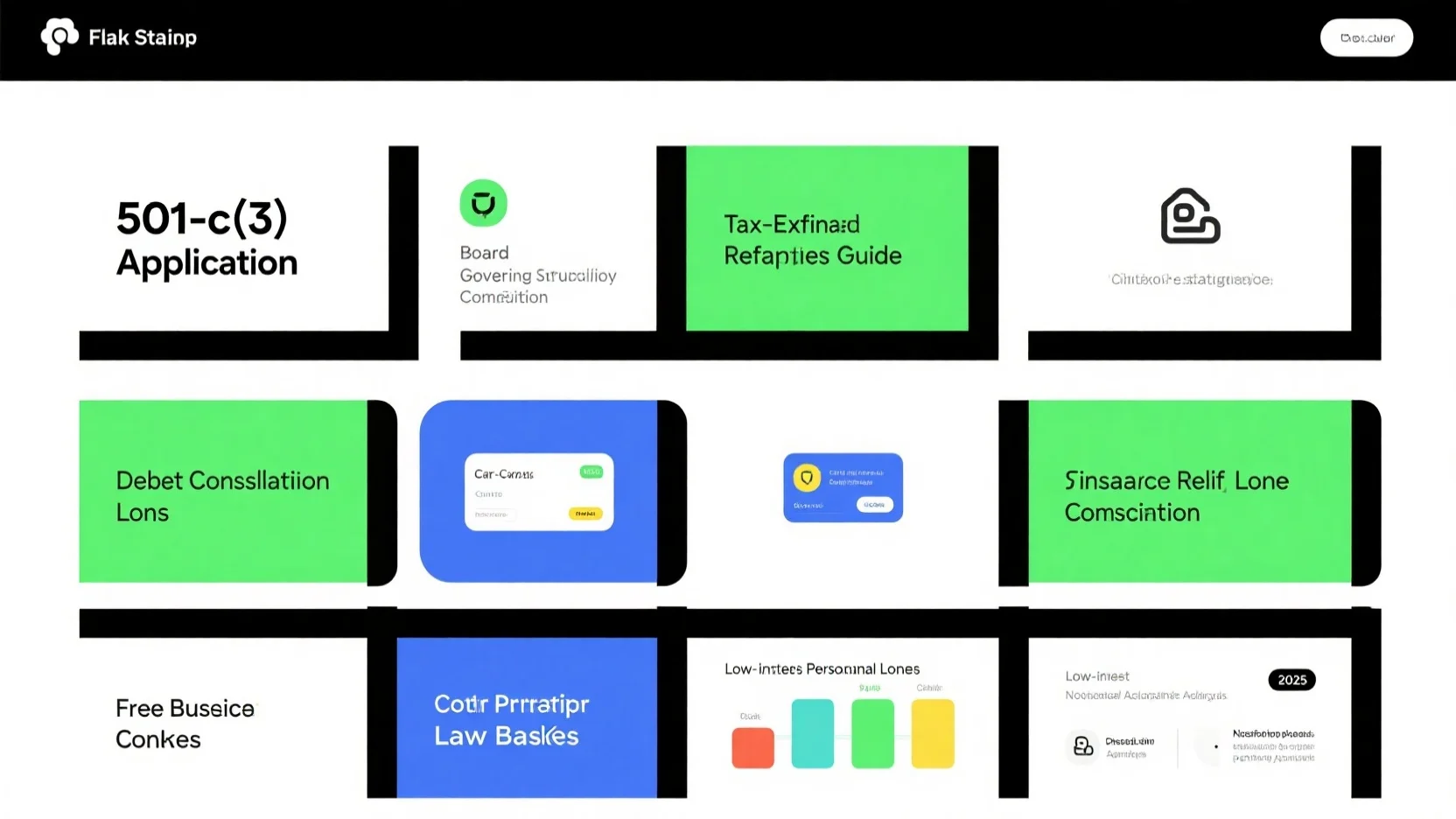Image Source: pexels
Starting a nonprofit organization requires careful planning and execution, and understanding ‘How to Start a Nonprofit Organization: Legal Requirements Simplified’ is crucial. Nearly 50% of nonprofits fail due to poor preparation, and 30% do not last beyond a decade. However, well-planned nonprofits thrive. In 2023, individual donors contributed $374.40 billion, showing the immense potential for impact when organizations follow essential steps to succeed.
Key Takeaways
- Create a clear goal for your nonprofit. A clear goal helps with decisions and tracks progress.
- Study what the community needs. Use surveys to learn and adjust your programs.
- Make a detailed business plan. A good plan guides you, gets donors, and keeps success steady.
Research and Planning
Define Your Mission and Purpose
I always emphasize the importance of starting with a clear mission. A nonprofit’s mission defines its purpose and guides every decision. Without it, measuring success becomes nearly impossible. Setting SMART (Specific, Measurable, Achievable, Relevant, Time-bound) goals ensures the mission remains focused and actionable. For example, engaging with community members helps identify real needs and align objectives with those needs. This approach not only clarifies the mission but also builds trust with stakeholders.
Conduct a Needs Assessment
Understanding the community’s needs is crucial. I recommend using surveys to gather data. Case study surveys provide in-depth insights, while sampled surveys efficiently reflect broader trends. Census surveys, though more comprehensive, offer the most accurate data. For instance, interviewing potential service users reveals their challenges and helps tailor programs effectively. Nearly half of nonprofits lack a strategic plan, yet 86% of those with one report positive impacts on revenue. This highlights the importance of a structured needs assessment.
Develop a Comprehensive Business Plan
A solid business plan acts as a roadmap for success. It outlines goals, strategies, and financial projections. I often look at examples like the Denver Foundation’s long-term blueprint or the Girl Scouts’ focus on underrepresented communities. These plans demonstrate how a clear strategy can drive impact. A well-crafted plan not only attracts donors but also ensures the nonprofit stays on track. Investing time in planning upfront leads to significant long-term benefits.
Legal Formation

Image Source: pexels
Choose and Register Your Nonprofit Name
Selecting the right name for your nonprofit is a critical first step. I always recommend choosing a name that reflects your mission and resonates with your audience. Registering the name ensures legal ownership, preventing others from using it without permission. This step also opens doors to potential benefits, such as licensing opportunities and international rights. For example, a registered trademark not only protects your brand but also enhances its marketability, making it more appealing to donors and partners.
File Articles of Incorporation
Filing Articles of Incorporation establishes your nonprofit as a legal entity. This document includes essential details like your nonprofit’s purpose, structure, and tax-exempt intentions. I’ve seen how nonprofits benefit from this step, as it lays the foundation for obtaining tax-exempt status. To simplify the process, I suggest preparing the document carefully and filing it with your state. Here’s a quick breakdown of its key components:
| Key Component | Description |
|---|---|
| Articles of Incorporation | Establishes the nonprofit’s legal existence and includes structural details. |
| Tax Exemption Information | Details the nonprofit’s purpose and asset dedication for tax-exempt status. |
| Filing Process | Must be filed with the state to legally form the nonprofit. |
Establish a Board of Directors
A strong board of directors is vital for your nonprofit’s success. I’ve observed how experienced board members bring diverse perspectives and skills to the table. For instance, Matt Bucher, a board member of Safe Passage, shared how his service enhanced his leadership abilities and deepened his connection to the mission. Board members with a personal commitment to the cause often inspire accountability and calculated risk-taking, which are essential for impactful decision-making.
Draft and Approve Bylaws
Bylaws act as the operating manual for your nonprofit. They outline governance procedures and ensure compliance with state and federal laws. I always stress the importance of drafting comprehensive bylaws, as poorly written ones can lead to confusion and legal issues. For example, bylaws clarify how the board operates and makes decisions, providing stability and direction. Without them, nonprofits risk mismanagement and operational failures.
Obtain an Employer Identification Number (EIN)
An Employer Identification Number (EIN) is essential for your nonprofit. This unique number identifies your organization to the IRS. I recommend obtaining an EIN early, as it’s required for hiring staff, opening a bank account, and completing registration forms. Even if your nonprofit doesn’t have employees, the EIN is necessary for tax-exempt status. This simple step ensures your nonprofit is ready to operate legally and efficiently.
Tax-Exempt Status and Compliance
Apply for Federal Tax-Exempt Status (501(c)(3))
Applying for federal tax-exempt status is a critical step in establishing your nonprofit. I always recommend starting by incorporating your nonprofit and obtaining an EIN. These steps create the legal foundation for filing Form 1023 with the IRS. This form requires detailed information about your organization, including its mission, activities, and financial plans. Smaller nonprofits may qualify for Form 1023-EZ, which simplifies the process. Filing fees range from $275 to $600, depending on the form you use. Approval can take several months, so I suggest preparing thoroughly to avoid delays. Achieving 501(c)(3) status exempts your nonprofit from federal income taxes and makes it eligible for grants and public funding.
Understand State Tax-Exempt Requirements
State tax-exempt requirements vary widely. I’ve seen how some states, like Wyoming, only require a copy of the IRS determination letter for sales tax exemption. Others, such as Pennsylvania, demand a detailed application demonstrating compliance with specific criteria. Most states ask for supporting documents like Articles of Incorporation and financial statements. Some, like Maryland, require periodic renewal filings. Understanding your state’s specific requirements ensures your nonprofit remains compliant and avoids unnecessary penalties.
Register for State Charitable Solicitation
If your nonprofit plans to solicit donations, registering for state charitable solicitation is essential. I recommend checking your state’s requirements, as they often include submitting financial reports and proof of tax-exempt status. This registration builds trust with donors and ensures transparency. For example, states like North Carolina require nonprofits to file semiannual reports for sales tax refunds. Staying proactive with these registrations helps maintain your nonprofit’s credibility and legal standing.
Maintain Annual Reporting and Compliance
Maintaining compliance involves regular reporting and audits. I always emphasize the importance of conducting annual audits to ensure financial transparency. Audits not only identify areas for improvement but also boost your nonprofit’s reputation. For instance, 67% of donors prefer detailed information on fund usage, which audits provide. Annual reports, including financial data, are often required to maintain tax-exempt status. Connecting these reports to your nonprofit’s impact encourages continued donor support and demonstrates accountability.
Starting a nonprofit organization may seem daunting, but it becomes manageable with proper planning and adherence to legal requirements. I’ve seen how organizations like the Boys and Girls Club of America and Ronald McDonald House Charities thrive by following these steps:
| Organization Name | Strategic Priorities | Key Actions |
|---|---|---|
| Boys and Girls Club of America | Increase program quality, Strengthen organizations, Advocate for youth development, Reach more youth | Establish quality standards, Increase government funding, Build partnerships with schools |
| Legal Aid Foundation of Los Angeles | Legal services, Staff development, Technology, Governance, Community, Pro bono, Financial & fund development | Identify staff leads, Set specific goals, Measure success metrics |
| Ronald McDonald House Charities of Northwest Ohio | Enrich lives of sick children and families | Provide housing, resources, educational programs |
By following these steps, you can create a strong foundation for your nonprofit and focus on achieving your mission. Take the first step today and turn your vision into reality with confidence. Remember, understanding how to start a nonprofit organization: legal requirements simplified is key to long-term success.
FAQ
What is the difference between a nonprofit and a for-profit organization?
A nonprofit focuses on serving a mission rather than generating profit. I’ve seen nonprofits reinvest revenue into programs, while for-profits distribute earnings to owners or shareholders.
How long does it take to get 501(c)(3) approval?
Approval typically takes 3-6 months. I recommend preparing Form 1023 thoroughly to avoid delays. Smaller nonprofits may qualify for the faster Form 1023-EZ process.
Do nonprofits need to pay taxes?
Nonprofits with 501(c)(3) status don’t pay federal income taxes. However, I always remind organizations to check state-specific tax exemptions and compliance requirements.
💡 Tip: Staying organized and proactive with filings ensures smoother operations and avoids penalties.





